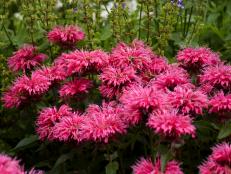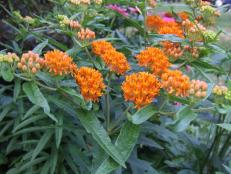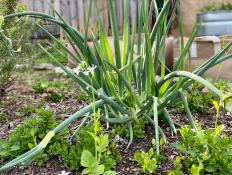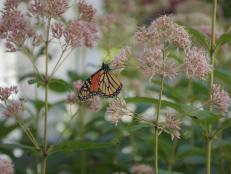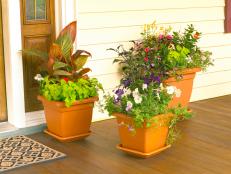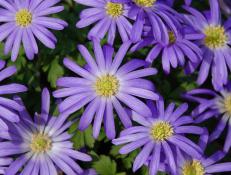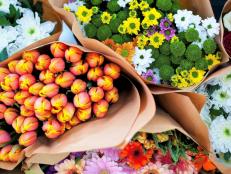Perennial Garden Design
Dig into the wonderful world of perennials. These come-back plants boast beauty that just gets better year after year.

Preen.com
An eye-catching perennial border packed with season-long color makes any landscape sing.
Discover the joy of growing perennials by devoting a planting bed to these terrific plants. Perennials are the original come-back kids, returning year after year to grace a garden with beauty. Having a good perennial garden design doesn’t mean you have to hire a professional. You can conquer the learning curve on mixing and matching perennials by mastering a few key concepts.
Before jumping into perennial garden design, review some basics about these plants. Perennials are non-woody plants that, unlike annuals, live for more than two years. The top growth usually dies back once a hard frost arrives, but growth resumes from roots or stems the following spring.
From year to year, perennial clumps tend to increase in size. In favorable conditions, a modest few stems of garden phlox may multiply into a two-foot-wide clump over two growing seasons. Some perennials, like yarrow or bee balm, gradually claim more and more garden real estate as stems spread underground. An effective perennial garden design must consider mature plant size and include some wiggle room to accommodate plant spread.
Unlike their annual cousins, perennials don’t usually provide a season-long flower show. Most perennials bloom for a two- to four-week window and then display foliage for the rest of the growing season. To create a perennial garden design with non-stop color, choose plants that flower in sequence throughout the growing season. You can also count on perennials with colorful foliage and annuals tucked among perennials to extend the color display.
Mixing and matching perennials may seem daunting, but if you follow a few basic rules, you can craft an eye-catching perennial garden design. Start by choosing two or three colors you want to see in your garden, and find plants that deliver those hues in either flowers or foliage. Explore flowering windows, and select perennials that open blooms at different points in the growing season.
Also consider how the plants’ leaves will look side by side. Aim to create a plant partnership that’s visually appealing when perennials are in and out of bloom. Above all, make sure the plants you intend to pair have similar growing requirements.
Focus on creating two or three plant combinations for a perennial garden design, and then contemplate how to bring those combinations together into a cohesive whole. You might count on white-flowering perennials or foliage plants to bridge the gap between combinations. Repeat combinations along a planting bed to create continuity in your perennial garden design. If you have a favorite plant or color, repeat that throughout your planting bed to draw the eye through the design.
In a one-sided planting bed, stair-step plant heights—tall plants in back, short ones in front. If your perennial garden design is a free-standing bed that will be viewed from all sides, put the tallest plants in the middle of the design and stair-step heights to bed edges.
To have an attractive perennial garden design year-round, don’t forget to consider the winter appearance of your planting area. Incorporate structures, such as a trellis, birdbath, sculpture or bench, to interject a design element that will hold it own in every season. You might also select perennials that retain sculptural seedheads through winter, such as ornamental grasses, black-eyed susan or coneflowers.







